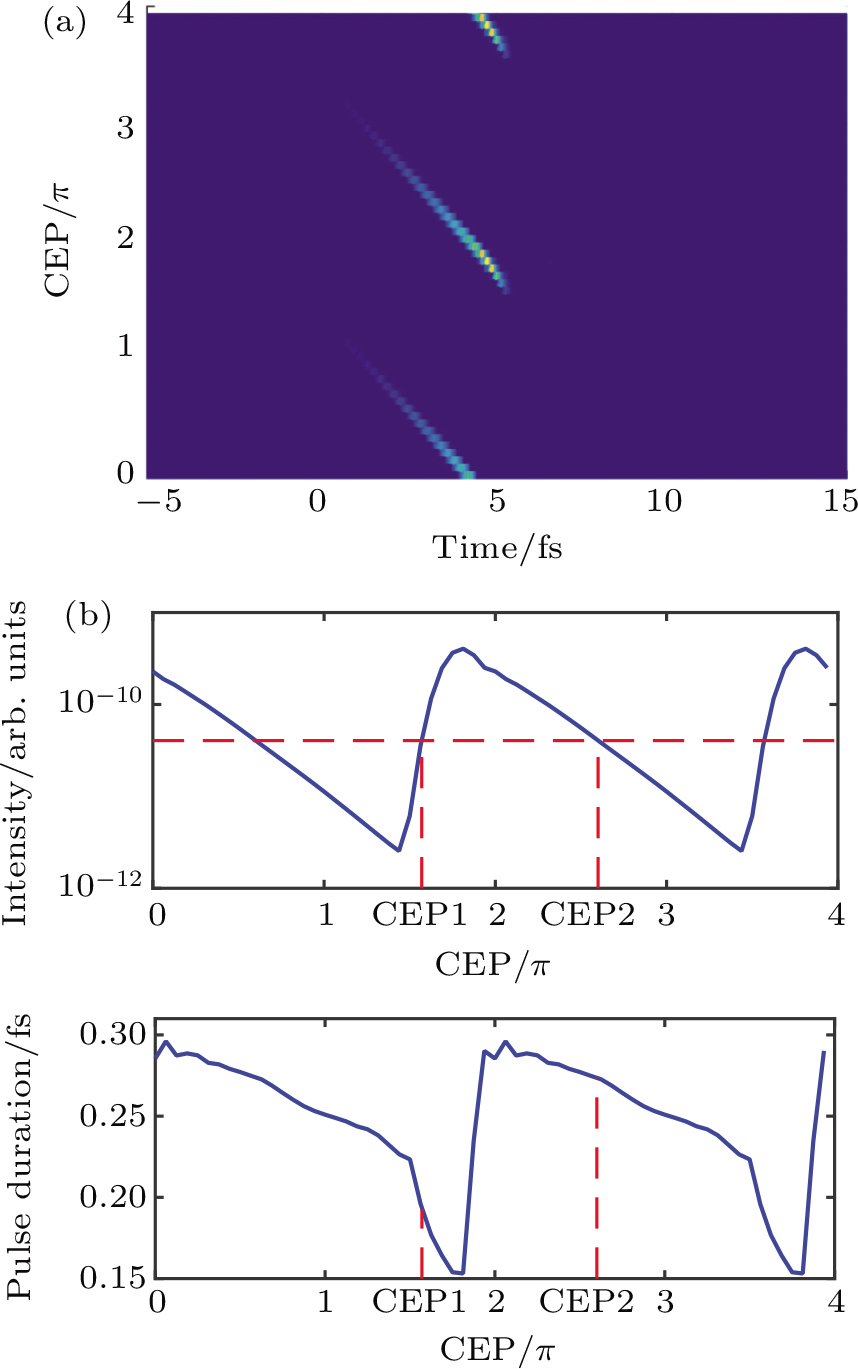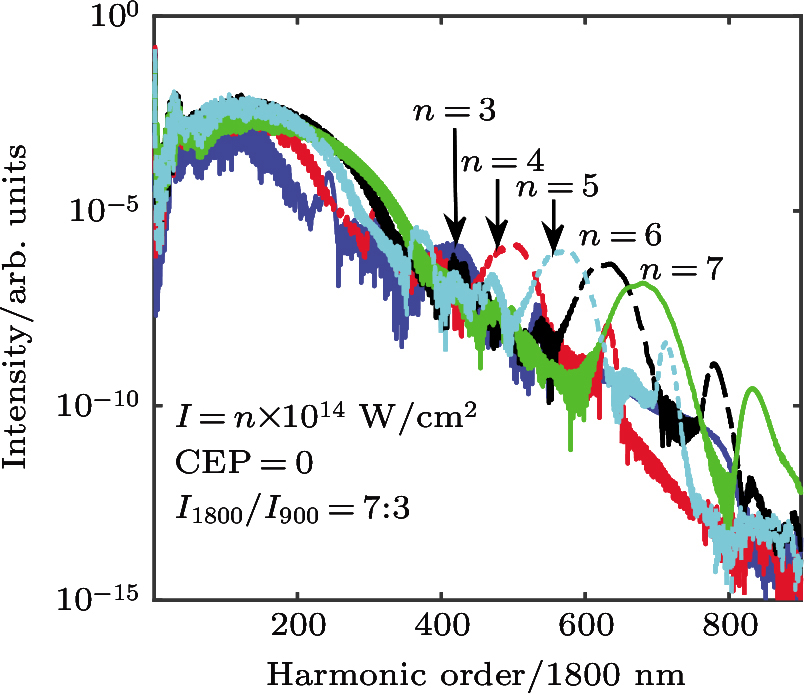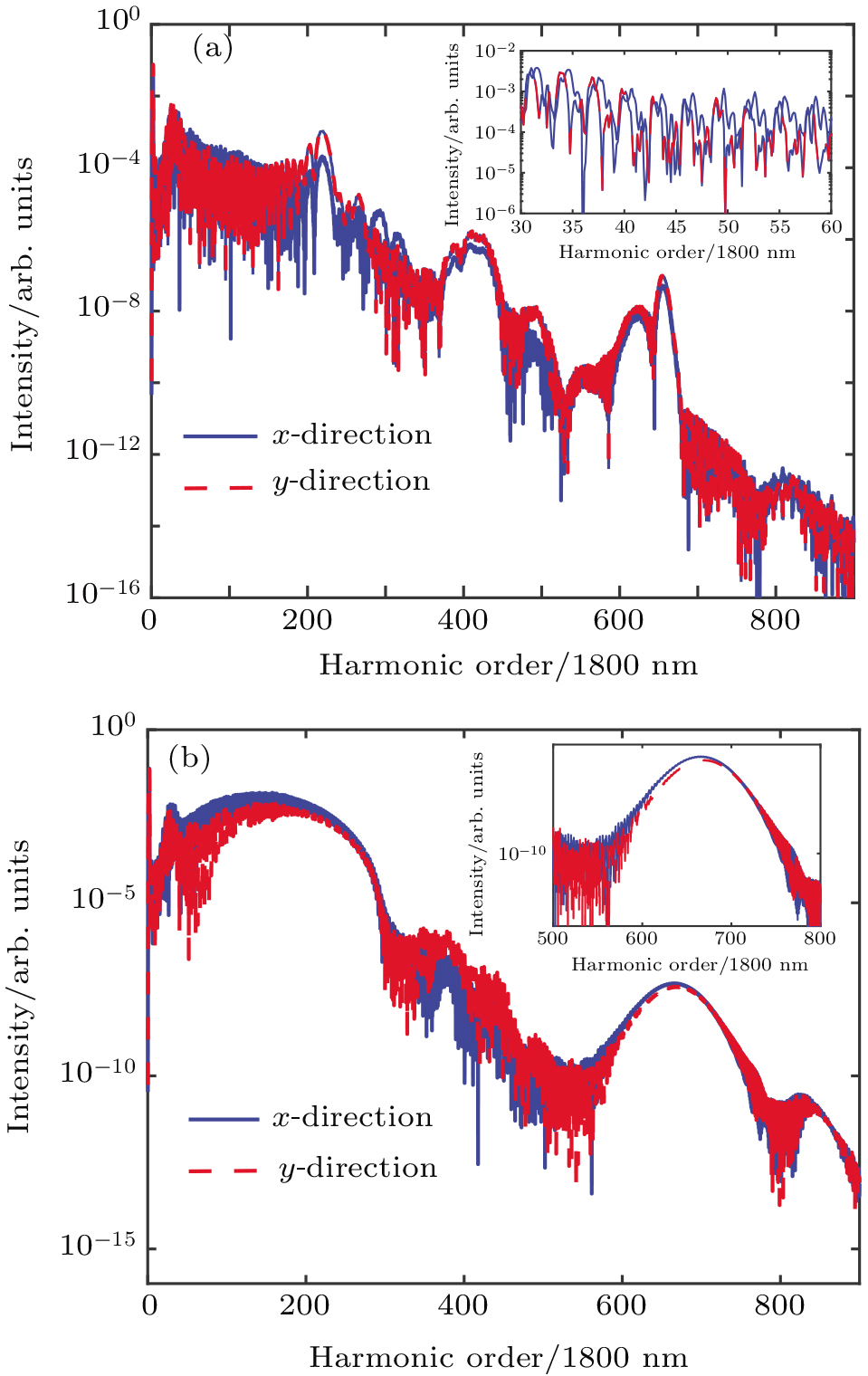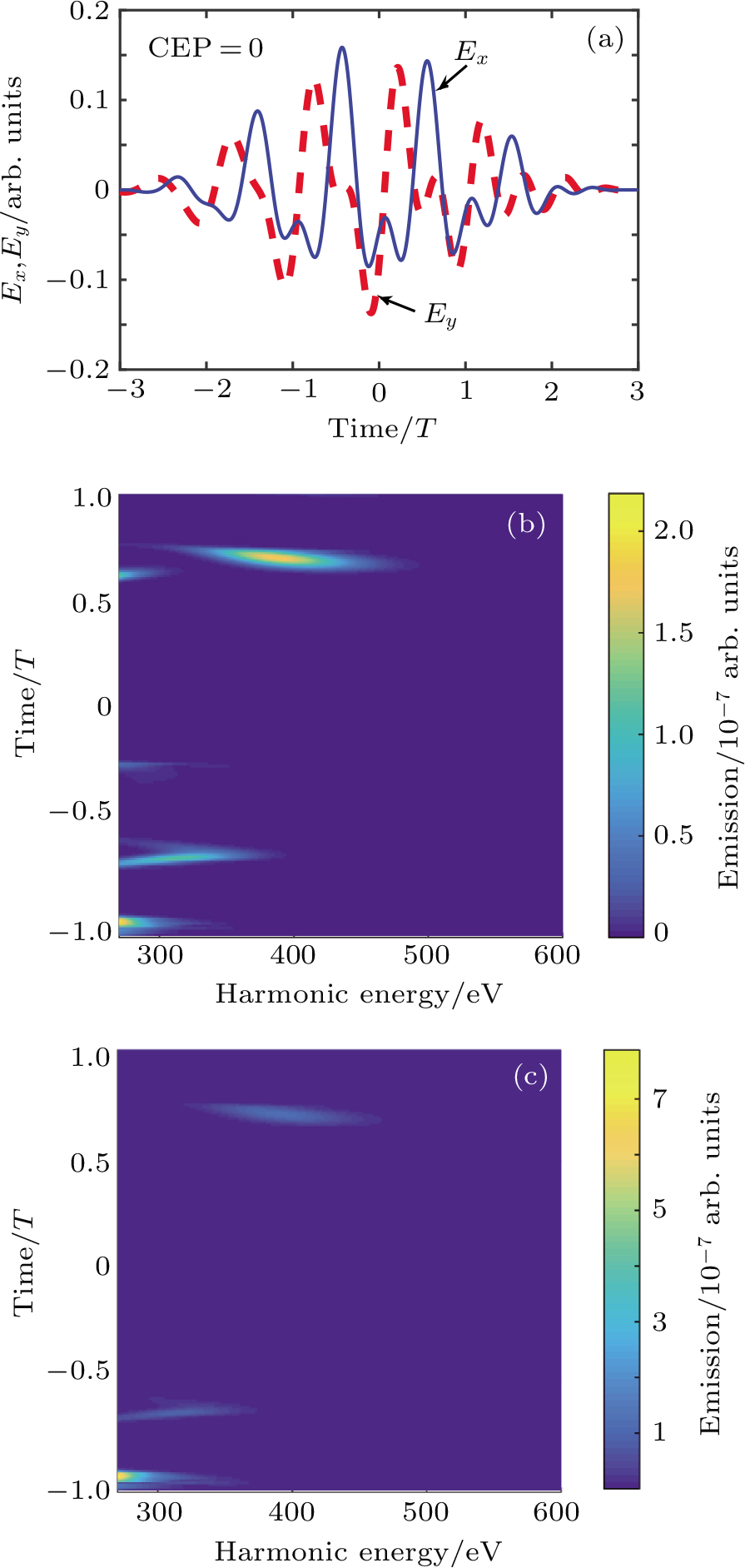† Corresponding author. E-mail:
Project supported by the National Natural Science Foundation of China (Grants Nos. 61690223, 11561121002, 61521093, 11227902, 11404356, and 11574332) and the Strategic Priority Research Program of the Chinese Academy of Sciences (Grant No. XDB16).
Most of the schemes for generating isolated attosecond pulses (IAP) are sensitive to the carrier-envelope phase (CEP) of the driving lasers. We propose a scheme for generating IAP using two-color counter-rotating circularly polarized (TCCRCP) laser pulses. The results demonstrate that the dependence of the IAP generation on CEP stability is largely reduced in this scheme. IAP can be generated at most of CEPs. Therefore, the experiment requirements become lower.
The isolated attosecond pulse (IAP) based on high-order harmonic generation (HHG) is of great importance to study ultrafast electronic dynamics in atoms and molecules. IAP allows for precise control of electron motion with a resolution approaching the atomic unit of time.[1–4] Many schemes for generating IAP have been proposed and investigated.[5–22] However, most of them are sensitive to the carrier-envelope phase (CEP) of the driving laser pulses.[23,24] From the viewpoint of experiments, almost all laser systems cannot maintain the stability of CEP in the long term. Even the passively CEP stabilized optical parametric amplification laser systems can only maintain CEP stability in a specific range.[25,26] Therefore, it is meaningful to find a scheme for generating IAP which is insensitive to, even independent of CEP. Some research has been conducted on this topic.[27,28] Recently, the generation of circularly polarized high harmonics using two-color counter-rotating circularly polarized laser (TC-CRCP) pulses is a fascinating research field.[29–33] In general, circularly polarized laser pulses are independent of CEP. If circularly polarized laser pulses can be used to generate IAP, the generated IAP may also be independent of CEP.
Mid-infrared (MIR) optical parametric amplification light sources have emerged in laboratories.[34–38] Some research on HHG has also been conducted using few-cycle MIR laser pulses.[8,22,23,39–43] In this work, we further theoretically study the IAP generation using few-cycle TC-CRCP laser pulses and investigate the dependence of IAP on CEP of the driving laser pulses, finding that IAP can be generated at most of CEPs, although at some CEP, the intensity of IAP is weaker. The CEP dependence of the IAP generation is much reduced, which thus reduces the requirements for the lasers in experiments.
We calculate the response of a helium-like model exposed to the laser field synthesized by two counter-rotating circularly polarized pulses at fundamental frequency ω (1800 nm) and second harmonic frequency 2ω (900 nm), respectively. The synthesized laser field in the x and y directions can be respectively presented as follows:
 |
 |
The high-order harmonic spectrum can be obtained by numerically solving the following time-dependent Schrödinger equation (TDSE):
 |

 |
During this work, we keep the intensity ratio between the fundamental pulse and its second harmonic as 0.7:0.3. The harmonic spectra under different total laser intensities are shown in Fig.
The harmonic spectra are very complex due to the complexity of the electron motion in two directions in the few-cycle TC-CRCP laser pulses. The first plateau is much shorter than the conventional plateau which reaches 3.17Up in linearly polarized laser pulse.[1] With increasing laser intensity, the second plateau gradually appears, on which a continuum harmonic spectrum is produced. Under the total laser intensity of 5 × 1014 W/cm2 (3.5 × 1014 W/cm2 for the fundamental laser and 1.5 × 1014 W/cm2 for the second harmonic), a clear continuum hump with harmonic orders of 500–700 is produced, which can be used to directly synthesize an IAP with the FWHM duration of about 280 as. In the following simulation, the total laser intensity of 5 × 1014 W/cm2 is maintained.
Figure
Then we calculate the intensity and pulse duration of the generated IAP under different CEPs. The temporal intensity profile of the harmonic emission as a function of CEP is shown in Fig.
 | Fig. 3. (color online) (a) Temporal intensity profile of the harmonic emission as a function of CEP. (b) Peak intensity (upper panel) and pulse duration (lower panel) of IAP as functions of CEP. |
In this scheme, the electron motion is in two dimensions. Many electrons will not go back to their parent nuclei precisely. We perform the time-frequency analysis by means of wavelet transform of the induced dipole response of the helium atom to the laser fields[44,45] to investigate the electron emission characteristics, as shown in Fig.
We investigate the CEP effect of the few-cycle TC-CRCP laser pulses on the generation of IAP. We find that under specific delay of the two laser pulses, IAP can be generated at most of CEPs, although the intensity of the generated IAP varies with CEP. Double attosecond pulses can be seen at some CEPs, but they are negligible because their intensities are more than two orders of magnitude weaker than those of the intensest IAPs. The time-frequency analysis shows that the generated IAP comes from the electron of the long trajectory. As a result, the requirements for generation of IAP in experiments can be greatly reduced.
| [1] | |
| [2] | |
| [3] | |
| [4] | |
| [5] | |
| [6] | |
| [7] | |
| [8] | |
| [9] | |
| [10] | |
| [11] | |
| [12] | |
| [13] | |
| [14] | |
| [15] | |
| [16] | |
| [17] | |
| [18] | |
| [19] | |
| [20] | |
| [21] | |
| [22] | |
| [23] | |
| [24] | |
| [25] | |
| [26] | |
| [27] | |
| [28] | |
| [29] | |
| [30] | |
| [31] | |
| [32] | |
| [33] | |
| [34] | |
| [35] | |
| [36] | |
| [37] | |
| [38] | |
| [39] | |
| [40] | |
| [41] | |
| [42] | |
| [43] | |
| [44] | |
| [45] |




